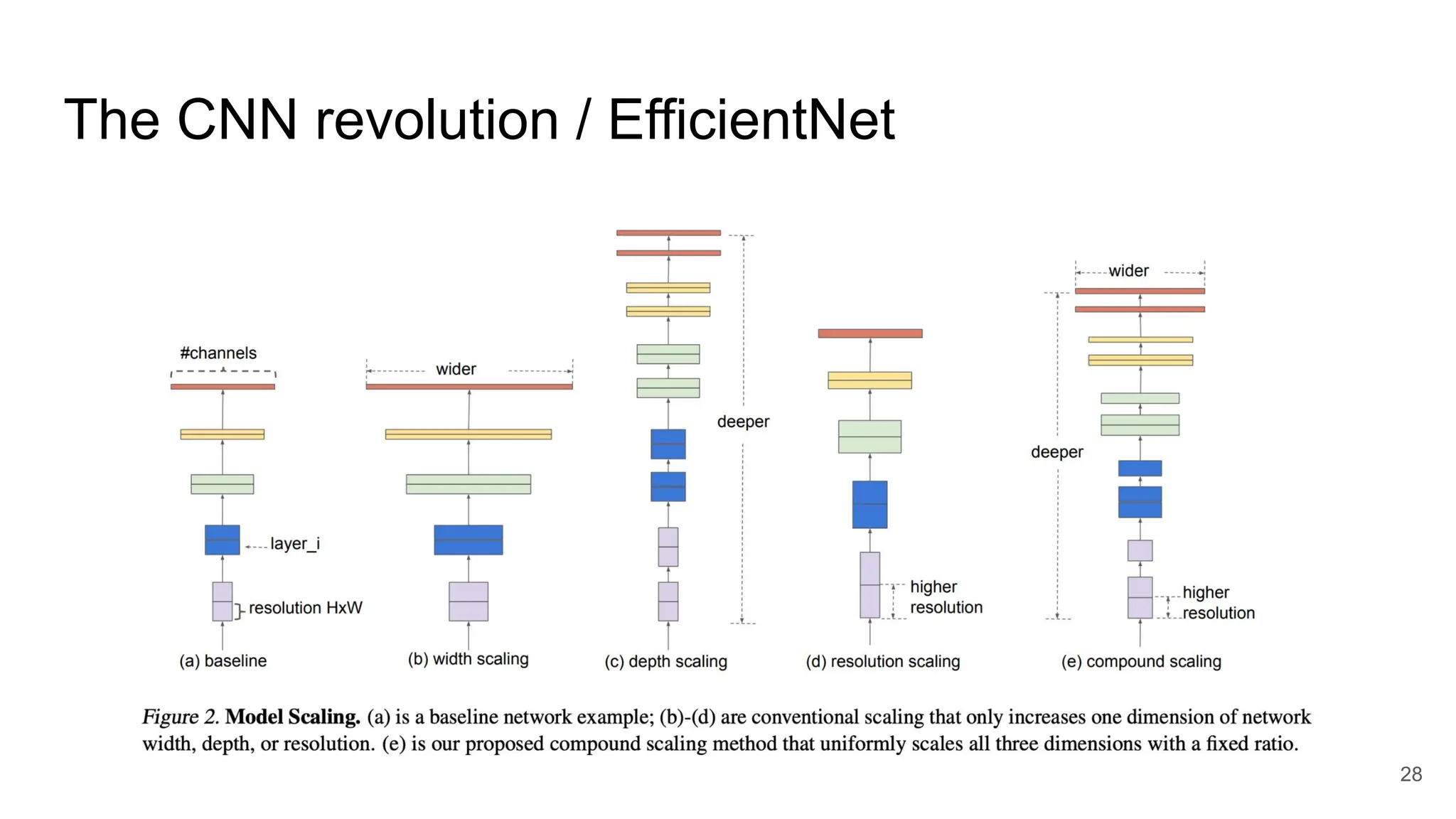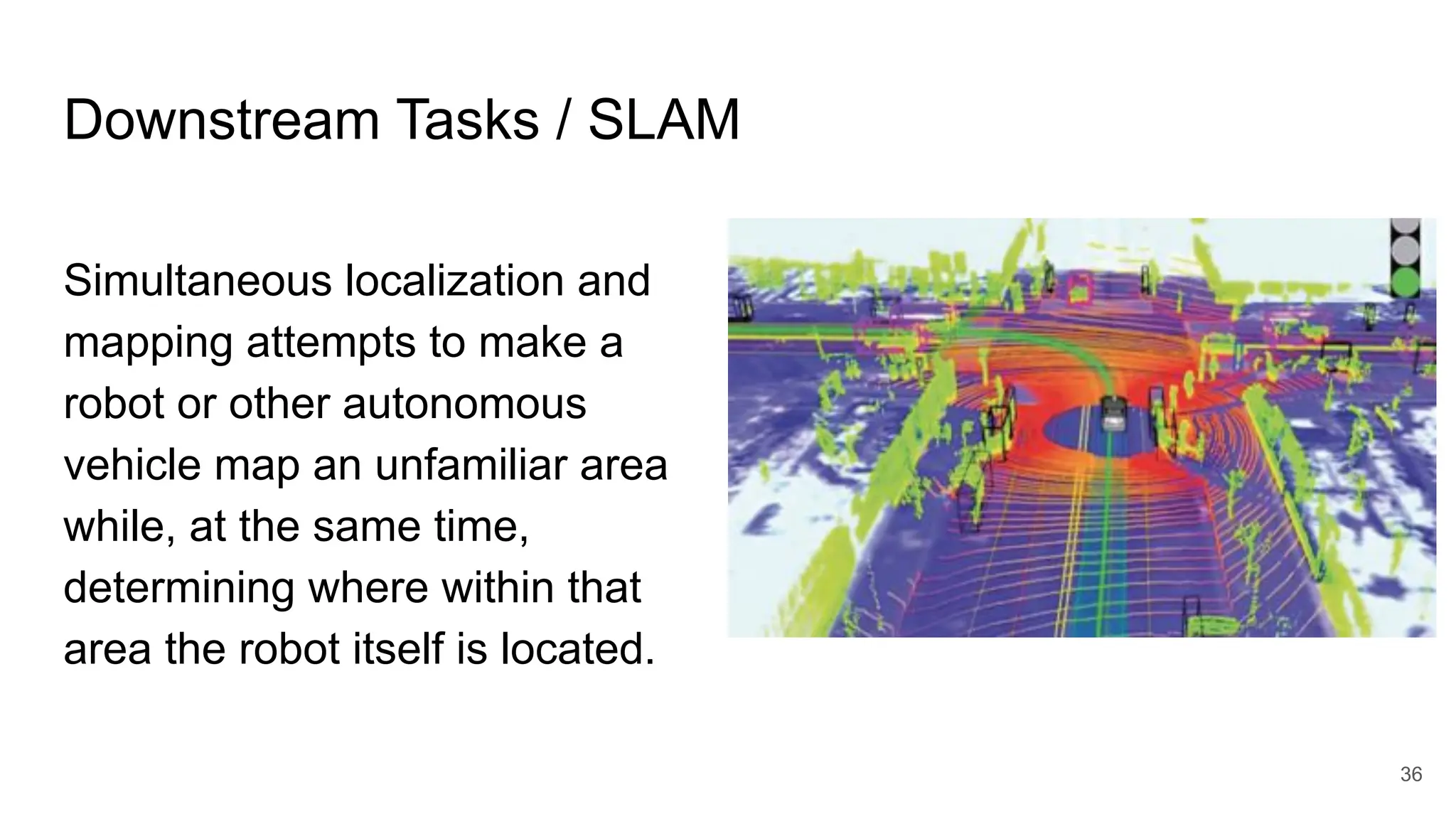This document explores the evolution of artificial intelligence in computer vision, detailing the historical developments from early vision systems to modern advancements like Vision Transformers (ViT). It highlights key breakthroughs such as the introduction of convolutional neural networks (CNNs) with AlexNet in 2012 and the subsequent rise of Vision-Language Models (VLMs) capable of zero-shot predictions in various tasks. The document underscores the ongoing innovation and integration of different architectures that redefine the capabilities of AI in understanding and processing visual information.

















































![Transformers with a twist: Vision-Transformers (ViT)
The Vision Transformer (ViT) model takes a
sequence of flattened 2D patches derived from an
image as input.
The image, denoted as x, with pixels in the [0, 255]
range and in the dimension of (H×W×C), is
reshaped into a sequence of patches.
The patches derived from the image are
transformed into a lower-dimensional space using a
trainable linear projection.
This transformation process, which we refer to as
“flattening,” results in a set of patch embeddings.
50](https://image.slidesharecdn.com/20240222pydatavisualcomputing-240226074848-584bde4b/75/Artificial-Intelligence-for-Vision-A-walkthrough-of-recent-breakthroughs-50-2048.jpg)











![Current SOTA: Vision-Language Models (VLMS)
Zero-shot prediction directly applies pre-trained VLMs to downstream tasks without any task-specific fine-tuning.
Image Classification aims to classify images into predefined categories. VLMs achieve zero-shot image
classification by comparing the embeddings of images and texts, where “prompt engineering” is often employed to
generate task-related prompts like “a photo of a [label].” .
Semantic Segmentation aims to assign a category label to each pixel in images. Pre-trained VLMs achieve
zero-shot prediction for segmentation tasks by comparing the embeddings of the given image pixels and texts.
Object Detection aims to localize and classify objects in images, which is important for various vision applications.
With the object locating ability learned from auxiliary datasets, pre-trained VLMs achieve zero-shot prediction for
object detection tasks by comparing the embeddings of the given object proposals and texts.
Image-Text Retrieval aims to retrieve the demanded samples from one modality given the cues from another
modality, which consists of two tasks, i.e., text-to-image retrieval that retrieves images based on texts and
image-to-text retrieval that retrieves texts based on images.
62](https://image.slidesharecdn.com/20240222pydatavisualcomputing-240226074848-584bde4b/75/Artificial-Intelligence-for-Vision-A-walkthrough-of-recent-breakthroughs-62-2048.jpg)











